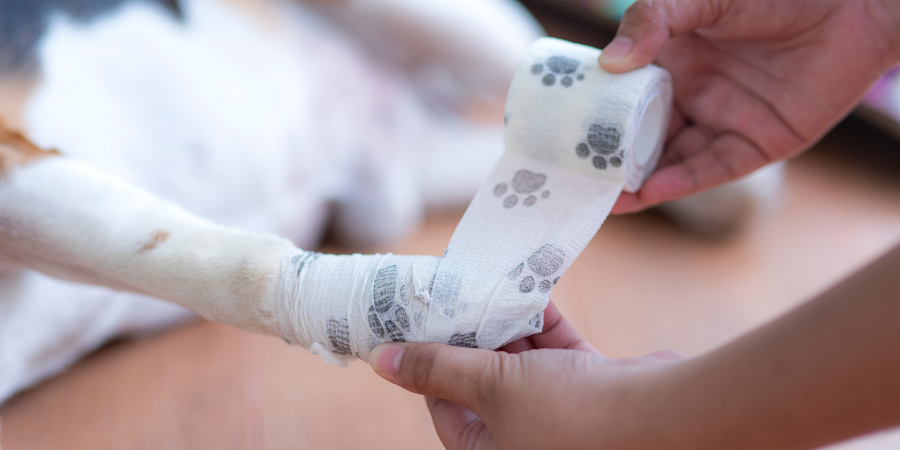The Complete Guide to Dog Wound Care: Steps to Wound Care and Infection Prevention for Your Dog at Home
Main conclusion: Through proper dog wound care, the risk of infection can be effectively reduced, healing can be accelerated, and your furry friend can return to a vibrant life!
1. Understand common wound types
- Abrasion : When your pet is running, the surface of the skin may become red, swollen, or slightly bleed due to friction.
- Laceration : A deep cut caused by a sharp object that requires more careful pet wound dressing.
- Avulsion : A large area of tissue or skin is peeled off. It is recommended to seek medical attention immediately.
2. Preparation before nursing: creating a safe and disinfected environment
- Choose a dust-free and well-lit space to clean the wound.
- Prepare tools: sterile cotton balls and gauze, normal saline, iodine or chlorhexidine solution, sterilized scissors and hemostatic forceps, elastic bandage and anti-licking and biting collar.
- Calm your dog down: Soothe him gently and distract him with treats. If he resists, ask for help or consult a veterinarian.
3. Steps for caring for dog wounds at home
1. Debridement and disinfection
First, rinse the surface dirt with warm water; use normal saline to clean the wound, and then pat it dry with sterile gauze; dip a cotton swab in iodine or chlorhexidine, and apply it in a circular motion from the center to the outside to complete the dog's wound disinfection .
2. Hemostasis and bandaging
Apply gentle pressure to the wound for several minutes to stop the bleeding; if bleeding persists, use the pet wound dressing method: place a sterile dressing, then bandage with an elastic bandage, and wear an anti-lick and bite collar.
3. External use and daily care
For cuts or lacerations, apply an antibacterial ointment recommended by your veterinarian; check the wound daily to see if there is purulent discharge, as this is an important part of preventing wound infection in dogs ; change the dressing regularly.
4. How to Treat Dog Wounds: Observe and Promote Healing
- Redness, swelling, heat and pain : Mild redness is normal. Severe redness, swelling or pain requires medical attention.
- Discharge : Clear or light yellow serous fluid is normal; pus or bloody discharge may indicate infection.
- Behavioral changes : Persistent lameness, loss of appetite, or lethargy may indicate pain or a systemic infection.
Tips to promote healing: Provide high-protein feed and vitamins A and C; avoid strenuous exercise and take short walks every day; keep the home environment clean.
5. When do you need professional help?
- The wound is deeper than 1 cm or has irregular edges.
- With foreign matter that cannot be removed on its own.
- Unable to stop bleeding or heavy bleeding.
- Signs of infection such as fever, suppuration, and foul odor may appear.
- Have not been vaccinated or are at risk of tetanus.
Frequently Asked Questions
When do you need professional help?
If the wound is deeper than 1 cm, has irregular edges, is accompanied by foreign objects that cannot be removed by yourself, has heavy bleeding that cannot be stopped, or has signs of infection such as fever or suppuration, please seek medical attention immediately.
How to promote wound healing?
Provide high-protein feed and vitamins A and C to enhance tissue repair; avoid strenuous exercise and take short walks every day; keep the home environment clean to reduce the risk of infection.

